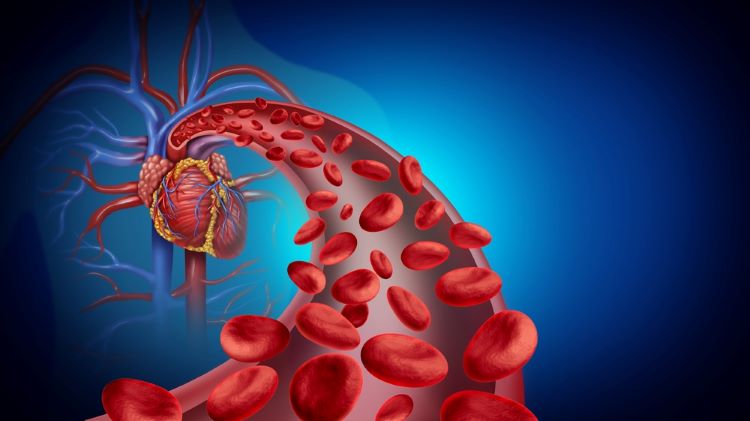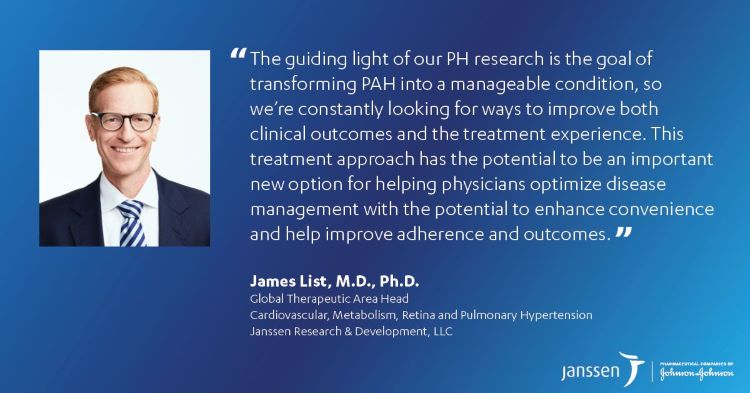Combination therapy significantly improves pulmonary hemodynamics
Posted: 6 March 2023 | Catherine Eckford (European Pharmaceutical Review) | No comments yet
Janssen’s single tablet of macitentan plus tadalafil significantly improved pulmonary hemodynamics in a Phase III trial for pulmonary arterial hypertension (PAH).


A once-daily, single tablet (fixed dose) combination therapy of macitentan and tadalafil (M/T STCT), significantly improved pulmonary hemodynamics (blood flow through pulmonary blood vessels) in pulmonary arterial hypertension (PAH) patients in a Phase III study (NCT03904693).
PAH is a rare, progressive blood vessel disorder that can lead to right heart failure.
Janssen’s data were presented during the American College of Cardiology’s 72nd Annual Scientific Session & Expo Together With World Heart Federation’s World Congress of Cardiology.
Combination treatment of macitentan plus tadalafil
Recently updated European Society of Cardiology/European Respiratory Society (ESC/ERS) PH guidelines have recommended initial dual combination therapy with macitentan plus tadalafil for PAH patients without cardiopulmonary comorbidities. Currently, this requires patients to take multiple pills as no single tablet that combines two or more PAH-specific pathways is available for these patients.
Dr Kelly Chin, Professor of Internal Medicine and Director of the Pulmonary Hypertension Program at UT Southwestern Medical Center, and an investigator in the A DUE study suggested that the results show “that a single tablet combination [of 10mg macitentan and 40mg tadalafil] has the potential to support initial dual combination therapy and rapid escalation from monotherapy, which may improve functional outcomes.”


Credit: The Janssen Pharmaceutical Companies of Johnson & Johnson
The Phase III PAH study
The hypertension study is designed to compare the efficacy and safety of investigational M/T STCT versus macitentan and tadalafil monotherapies in patients with PAH.
A total of 187 adult PAH patients worldwide, in World Health Organization (WHO) functional class (FC) II or III who were treatment naïve or on a stable dose of an endothelin receptor antagonist (ERA) or a phosphodiesterase type 5 inhibitor (PDE5i) for at least three months, were enrolled in the study.
The study met its co-primary endpoint, in which pulmonary vascular resistance (PVR) was measured 16 weeks following initiation of treatment expressed as the ratio of geometric means to baseline. A marked pulmonary hemodynamic improvement was shown by the highly statistically significant, consistent and robust PVR reduction in participants treated with M/T STCT compared to both monotherapies. PVR change with M/T STCT was significantly greater versus macitentan.
Secondary efficacy outcome measures included change from baseline in exercise capacity as measured by change in six-minute walk distance (6MWD) at the end of double-blind treatment at week 16 compared to baseline.
At week 16, treatment effect was not statistically significant; however, a clinically relevant improvement in 6MWD in favour of M/T STCT versus monotherapies was observed.
The safety profile of M/T STCT was consistent with the known safety profiles of macitentan and tadalafil monotherapies and no new safety observations were made.
Related topics
Big Pharma, Biopharmaceuticals, Clinical Development, Drug Development, Formulation, Research & Development (R&D), Therapeutics









